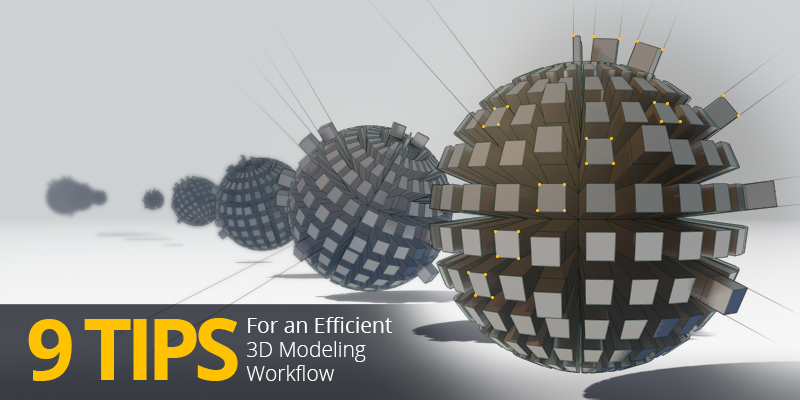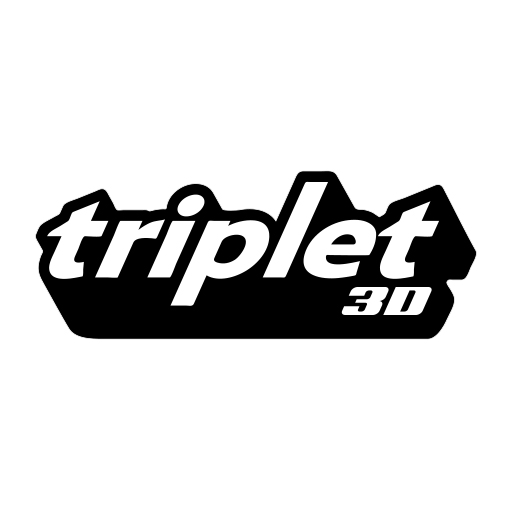
9 Tips for an Efficient 3D Modeling Workflow
Whether you are about to begin your first 3D modeling project or you’re an advanced modeler, there are several things you can do to improve your workflow and efficiency. Incorporate the following nine tips into your own workflow and you’ll be off to a great start on your next project.
1. Know Your Tools
This is the most important before you even consider beginning a new project. Learn the interface, know where the tools are and know what they are used for. This may sound like a no-brainer, but if you don’t take the time to learn the basics, it’s definitely going to affect your productivity. 3D programs are complex, put in some time getting to know them first, and then when you’re feeling confident you’ll be ready to start your first project. If you are using Cinema 4D, you can use our tutorials to get started http://www.behance.net/gallery/8813517/Cinema-4D-Tutorials.
2. Learn to navigate the user interface.
Learn how the viewports work and are configured. You’ll need to know which viewports represent the top, side, and perspective view. In Cinema 4D, there are three ways to zoom, orbit, and pan in each viewport.
1. Use the left, middle, and right mouse buttons in conjunction with the option key on the keyboard.
2. Use the icons in the top right of each viewport
3. Use the 1,2, and 3 keys in conjunction with the left mouse button.
Experiment with all three methods. Use the one that feels most comfortable and intuitive for you.
3. Layers
Yep, even 3D programs have these. They are not unlike layers that you might be familiar with from using Photoshop or Illustrator. Layers will be a godsend when you start creating complex models with hundreds to thousands of components. When your viewport starts getting cluttered, having the ability to show/hide or solo a layer will come in handy for visual clarity and to help you focus on only the model that you are currently working on. Layers, get to know them. They will be your best friend.
4. Shortcuts
It’s very likely that within the program you are using, there will be shortcuts you can implement into your workflow. Whether you’re using hotkeys, customizing your workspace, or using premade textures/materials/etc., all of these will make your modeling experience smoother and more efficient.
If your program allows you to customize the workspace, take advantage of it. Figure out which tools you use most often, and add them to your main workspace. If you like hotkeys, use the pre-configured ones. If your program lets you assign your own, do so, as it will only make things quicker and easier for you.
You can also download premade textures, materials, objects, scenes, or anything else you may need from the Internet or with plug-ins. Or you can create your own and save them for easy access for other projects.
5. Content Browser
This post is about 3D modeling, but modeling can be hard and time-consuming. In Cinema 4D’s content browser, you will find a plethora of pre-built 3D models ready to use at your disposal. Of course you most likely will not to able to complete an entire project by using these pre-built models.But for accessories like adding streetlights, chairs, and (new to R16) doors and windows, these models will save you a lot of time with populating your scenes.Modeling is tough. It’s OK to let someone else do some of it for you.
6. Multi-document Workflow
One thing that you will constantly be doing while creating your 3D models is importing pre-built assets into your scenes. These assets can be created by you or purchased from websites such as turbosquid, pixellab, cgaxis or a host of other sites. The point is to get familiar with how to import a model into the scene you are currently working on.In Maya, you would use the file, import function.
In Cinema 4D, use the object manager, select your component, edit, copy. Go to the main menu ‘window’ tab, at the bottom select the scene you would like to import to, then edit/paste in the object manager.
Multi-document workflow is important and is different in every software package. The nice thing is that once you’ve built a model, it’s yours forever and you can re-use it in other scenes.
7. Units
What are you modeling? A shoe, a building, a tool? What unit of measurement should you use? Inch, foot, centimeter, millimeter? For each type of model you create, you might need to change the unit of measurement before you start. In Cinema 4D, you can adjust your units in the preferences window. Edit > preferences > units > select your desired unit of measurement.
8. Plan Your Work
Jumping into a new project without having a plan is like cooking something new without a recipe or directions. It’ll be more likely that a mistake may occur, which in turn, can cost you time, money, or you may end up with something completely different than what you set out to create. Basically, get all of your ‘ingredients’ together first, and then you’ll be ready to start.
First, take some time to figure out what you want your final project to look like. Make sketches, mood boards, storyboards, or find inspiration images. Either rough or detailed sketches will help you figure out where the project is headed. You can also use drawings or photos to model from. Having a clear plan will give you direction for when you begin modeling.
If you are creating a technical model, such as architecture or a product, use detailed plans supplied from an architect, designer, or engineer. Most 3D applications will allow you to import your plans and elevations, scale them, and model your subject to real world dimensions. Modeling to the correct scale is vital. If you are working on an architectural visualization, you will most likely need to incorporate cars, trees, and people into your model. If you create your model to the wrong scale, any asset you import will be out of proportion to the rest of the model. Thus, you’ll have to spend time rescaling all of the entourage elements, which can get time-consuming.
9. Work from Largest to Smallest Geometry
When you’re ready to begin a new project, its important and easier to work from largest to smallest geometry.In your 3D program, rough in the basic form of your largest component, working your way down to the small details. For example, when modeling a building – start with the walls and roof, working your way down to the windows, mullions, door handles, lights, etc.
These tips should get you started on a more efficient work process. Do you have certain things you do to improve your workflow? Leave a comment below.


There are no comments so far